#letter pattern in java
Explore tagged Tumblr posts
Text
Minecraft Sofit Letters and Misc Jewish Designs
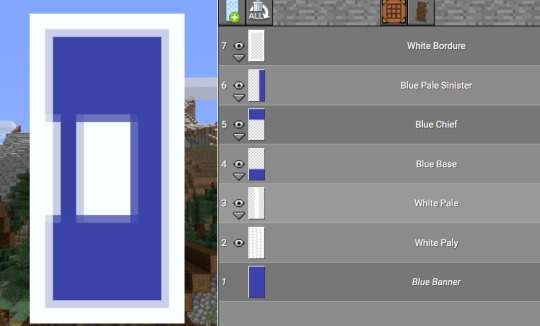
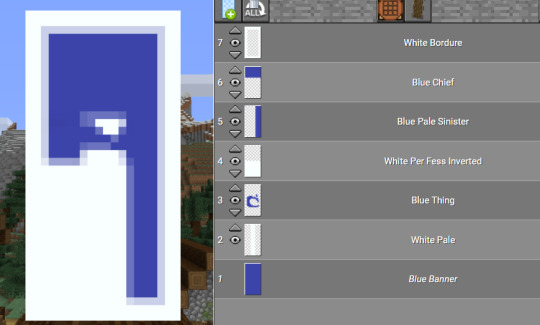
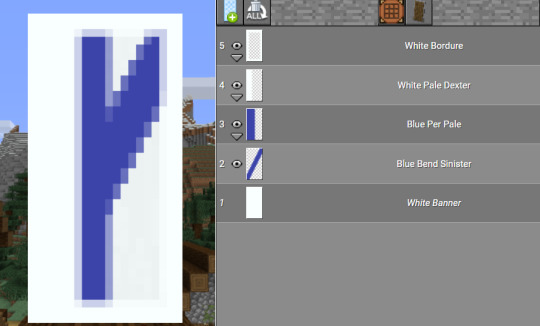
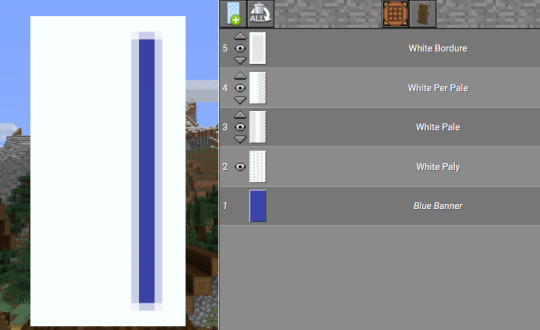
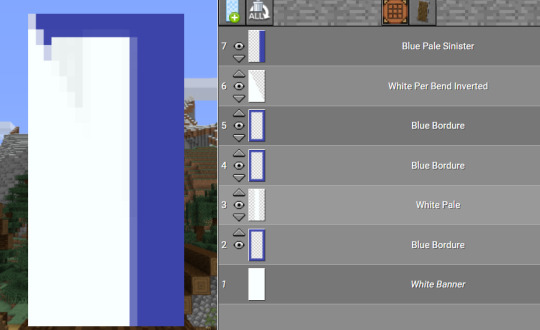
I am not a fan of the last one since it's not the same size as all the others as it was the only way i could get it to look different compared to

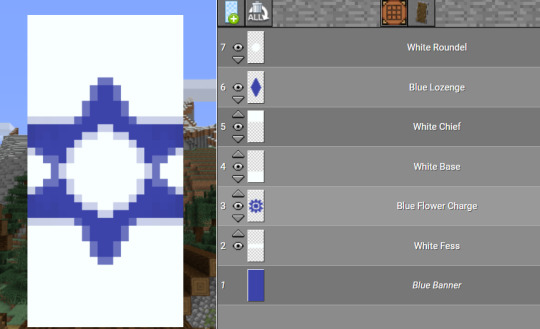
Mezuzah for the door!
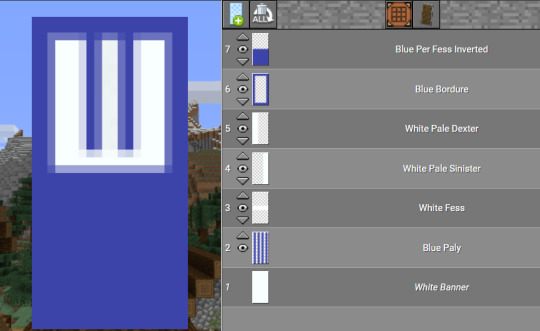
use this design or the first design for shin then place in an item frame or an invisible item frame if you are java creative and rotate ↗


and as a bonus here are two shabbat candle designs


Letters א through ל
Letters מ through ת
Sofit Letters, Magen David patterns, Mezuzot, and Shabbos Candles
9 notes
·
View notes
Text
A Writeblr Introduction
About Me:
Hej.
You can call me Lisle, I am 20 and have been an avid writer since I learned to mash letters together. I've lurked on Tumblr intermittently for a little under five years.
I am constantly experiencing ear pain due to always wearing earbuds, but I view them as a necessity because music helps me focus. That, and I am not a fan of outside noise.
I mostly read contemporary or science fiction, though I do occasionally like some psychological horror.
Also: My favorite color is pink :)
About My Writing:
I mostly write science fiction, though, I also like to sometimes write contemporary fiction or horror (noticing a pattern yet?)
I try to write stories that have a heavy focus on the characters and their mentalities. I also absolutely love creating a cheery little guy and then putting them in a terribly fucked up scenario.
My Current WIP:
The novel I'm working on right now is the first book in what is planned to be a duology with the possibility of more if I deem it necessary to tell the whole story.
The novel is science fiction, specifically Cyberpunk. The novel's current theme deals with bodily autonomy, identity, and the corruption of power. I would say more about the book, but I have been told that giving away too much about a novel on the internet is not good if you want to be traditionally published like I do.
Conclusion?
I am here. I will occasionally post some of my other, smaller, WIPs that I do not plan on publishing traditionally. Those projects will mostly be writing practice projects or leisure projects.
If you stuck around to read this, thank you, I hope you stick around longer and help support my career as an author.
(Master List Under the Cut)
Master List
Doves, Death, and Java:
Opening Line
The Characters/OCs
ANOMALY:
Early History
Interstellar Travel
Homeworlds Pt. One
Homeworlds Pt. Two
Homeworlds Pt. Three (Final)
Uncommon Face (ANOMALY):
Part One
Part Two
Part Three
Part Four
Part Five
Part Six
On the Pond's Surface:
Part One
Part Two
Part Three
Part Four
Part Five
Part Six
Part Seven
Part Eight
Part Nine
Part Ten
Part Eleven
The Entire Story
#writeblr#my writing#author#writeblr intro#creative writing#writers on tumblr#writeblr introduction#writing
32 notes
·
View notes
Text
Share tips for improving code quality and maintainability.
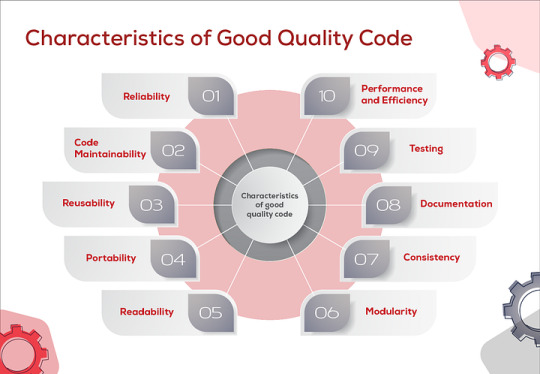
1. Follow Java Naming Conventions
Classes: Use PascalCase for class names (e.g., EmployeeDetails).
Methods/Variables: Use camelCase for method and variable names (e.g., calculateSalary).
Constants: Use uppercase letters with underscores for constants (e.g., MAX_LENGTH).
2. Use Proper Object-Oriented Principles
Encapsulation: Make fields private and provide public getters and setters to access them.
Inheritance: Reuse code via inheritance but avoid deep inheritance hierarchies that can create tightly coupled systems.
Polymorphism: Use polymorphism to extend functionalities without changing existing code.
3. Write Clean and Readable Code
Keep Methods Small: Each method should do one thing and do it well. If a method is too long or does too much, break it down into smaller methods.
Avoid Nested Loops/Conditionals: Too many nested loops or conditionals can make code hard to read. Extract logic into separate methods or use design patterns like the Strategy or State pattern.
4. Use Design Patterns
Leverage proven design patterns like Singleton, Factory, Observer, and Strategy to solve common problems in a standardized, maintainable way.
Avoid overcomplicating things; use patterns only when they add clarity and solve a specific problem.
5. Implement Proper Error Handling
Use exceptions appropriately. Don’t overuse them, and catch only the exceptions you can handle.
Ensure that exceptions are logged for better debugging and auditing.
Use custom exceptions to represent domain-specific issues, so they are easier to debug.
6. Utilize Java’s Stream API
The Stream API (introduced in Java 8) helps reduce boilerplate code when performing collection operations like filtering, mapping, and reducing.
It makes code more concise and expressive, which helps with readability and maintainability.
7. Write Unit Tests
Use JUnit and Mockito for unit testing and mocking dependencies.
Write test cases for all critical methods and components to ensure the behavior is as expected.
Use Test-Driven Development (TDD) to ensure code correctness from the start.
8. Use Dependency Injection
Prefer Dependency Injection (DI) for managing object creation and dependencies. This decouples components and makes testing easier (using tools like Spring Framework or Guice).
DI helps to make your classes more modular and improves maintainability.
9. Avoid Code Duplication
Use methods or utility classes to avoid repeating code.
If the same logic is used in multiple places, refactor it into a single reusable method.
10. Use Annotations
Use Java annotations (like @Override, @NotNull, @Entity, etc.) to improve code clarity and reduce boilerplate code.
Annotations help to enforce business logic and constraints without having to manually check them.
11. Leverage IDE Features
Use tools like IntelliJ IDEA or Eclipse to automatically format code and identify potential issues.
Many IDEs have integrated tools for running tests, refactoring code, and applying coding standards, so make full use of these features.
12. Optimize for Performance Without Sacrificing Readability
Only optimize performance when necessary. Premature optimization can lead to complex code that’s difficult to maintain.
Profile your code to identify bottlenecks, but prioritize clarity and maintainability over micro-optimizations.
13. Implement Proper Logging
Use a logging framework like SLF4J with Logback or Log4j2 for logging. This provides a consistent logging mechanism across the application.
Ensure that logs are meaningful, providing information about the application’s state, errors, and flow, but avoid excessive logging that clutters output.
14. Document Your Code
Use JavaDocs to generate documentation for public methods and classes.
Document not just the what but also the why behind critical decisions in the codebase.
15. Keep Your Codebase Modular
Break your project into smaller, well-defined modules, and avoid large monolithic classes.
Use packages to group related classes, ensuring that each class or module has a single responsibility.
16. Use Static Analysis Tools
Integrate tools like Checkstyle, PMD, and SonarQube to enforce coding standards, detect bugs, and ensure code quality.
These tools help you identify code smells and areas where quality can be improved.
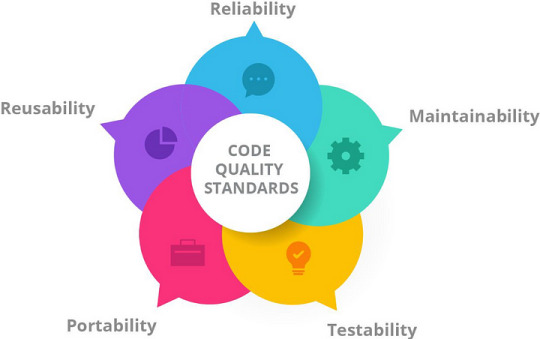
0 notes
Text
BARD vs ChatGPT – Unveiling the Ultimate AI Showdown
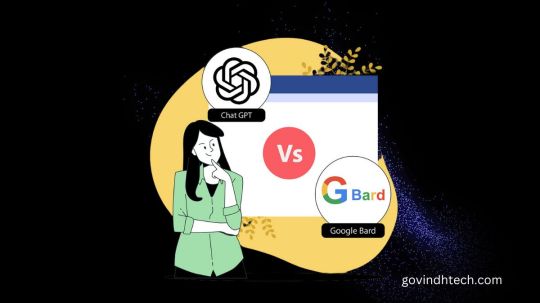
BARD vs ChatGPT Comparison Describe ChatGPT Ai-powered ChatGPT is a conversational chatbot that uses machine learning. Generative Pre-Trained Transformer (GPT) technology finds patterns in data sequences.
ChatGPT uses the GPT-3.5 language model trained on internet-sourced human-authored text. The premium ChatGPT Plus uses the enhanced GPT-4 model, boosting its capabilities. ChatGPT uses AI language models to answer user queries.
What’s Google Bard? Google Bard, an AI-driven chatbot, uses natural language processing and machine learning to mimic human conversations and use internet data to respond.
LaMDA was used for dialogue applications until Bard upgraded to Google’s PaLM 2 language model. This improved model outperforms its predecessors in common sense reasoning, logic, and mathematics.
Bard focuses on detailed responses like human conversation, unlike search engine results. It is a digital assistant like Alexa and Siri that provides concise, accurate information with links for more context.
Main Differences Between ChatGPT, Bard Both chatbots use natural language processing to respond to user queries like humans.
However, their diverse data sources and models of training make important differences.
BARD vs ChatGPT: Which Chatbot is best? Top features of Bard: Excellent Text Generation The text generated by Google Bard is similar to human writing and serves many purposes. It involves answering questions, summarizing, and translating.
Help with creative writing Google Bard can write job ads, hiring letters, and reports. This makes it useful for businesses.
Large dataset Google Bard learns from lots of text and code. It gives better, more detailed answers than smaller models.
Drafts feature If you want more information or want to change Bard’s initial statement, use his drafts. This displays different messages.
Write code in multiple languages Even when spoken in plain language, Google claims Bard can code simple and complex tasks in many programming languages.
Integration of Google Services Bard integrates with Google Docs, Sheets, and Gmail.
Supports multiple languages Bard speaks and translates Japanese, Korean, U.S. English and other languages.
Pros and Cons of Bard Advantages of Bard Bard uses current sources. Bard can answer with images. Bard users can resume previous chats. Bard responds to voice commands. Bard supports over 40 languages, including English, Japanese, and Korean. Bard offers multiple response drafts. Disadvantages of Bard Bard’s limitations may cause inaccurate or incomplete information. Bard can repeat data biases and respond offensively. Bard’s integrations are new and growing. It collects and stores user data, raising privacy and security concerns. Bard must cite sources, making accuracy verification difficult. Quotes from websites are cited and linked. Bard pricing and accessibility Google Bard is free for unlimited questions.
ChatGPT Top Features: Advanced Text Generation ChatGPT can write nearly perfect grammar, sense, and conversational text, unlike Bard. This helps with chatbots, summaries, and writing.
Contextual Understanding ChatGPT can understand the conversation and respond logically, unlike Bard. The attention trick highlights key words and phrases in a sentence.
Supports problem-solving and programming Simple tasks and regular language instructions are easy for the chatbot. Math, coding, language translation, and more are possible. ChatGPT supports Python, JavaScript, Java, and others.
Ability to speak multiple languages ChatGPT can understand and respond to multiple languages. It learns English, French, and others to overcome language barriers.
Creative expression ChatGPT uses creative language and coherent responses. To entertain users, it can write poems, jokes, puns, film plots, song lyrics, and more.
Continuous process of improvement User interactions shape ChatGPT’s learning. The language generation is improved by user feedback. ChatGPT makes responses more user-friendly over time.
Pros and Cons of ChatGPT Advantages of ChatGPT Due to its extensive text learning, ChatGPT can answer any question. Its answers are so good they sound human-written. Apps that need fast responses benefit from its speed. Since you can teach it different topics, it works with most apps. ChatGPT is cheaper than hiring a writer. This applies to blogging, news, and writing. Disadvantages of ChatGPT ChatGPT may have responded incorrectly because it learned from old data and has not been updated since September 2021. It may give biased answers because it learned from unfair data. This makes it prone to errors, especially when correcting questions. ChatGPT uses a lot of data but only what it knows It doesn’t understand the conversation, so it may give wrong answers. ChatGPT pricing and accessibility ChatGPT is free, but ChatGPT Plus costs $20 per month for extra features.
ChatGPT Plus offers:
Faster responses Even during peak hours, ChatGPT is available. Early access to new features and improvements. Similarities Google BARD vs. ChatGPT
Google Bard and ChatGPT Tested We reviewed both tools’ capabilities under different conditions. Our ChatGPT and Bard test results are as follows.
Receiving Facts Prompt: What is ChatGPT?
Bard response: ChatGPT is a chatbot developed by OpenAI and launched in November 2022. It’s essentially a large language model, just like me, designed to have human-like conversations and complete tasks like writing different kinds of creative text formats, translating languages, and answering your questions in an informative way. Here’s a quick breakdown of how it compares to me:
Similarities:
Both ChatGPT and I are large language models trained on massive amounts of text data. We can both hold conversations, answer your questions, and generate different creative text formats. Differences:
Developer: ChatGPT is developed by OpenAI, while I am developed by Google AI. Underlying technology: ChatGPT uses the GPT-3.5 and GPT-4 language models, while I use the PaLM family of models. Accessibility: ChatGPT has both free and paid tiers, while I am currently under research and not publicly available. Knowledge base: While I have access to and can process information from the real world through Google Search, ChatGPT’s knowledge base is limited to the information it was trained on, which primarily consists of text and code up to September 2021. This means my responses may be more up-to-date and grounded in real-world events. Overall, ChatGPT and I are both examples of advanced language models pushing the boundaries of what AI can do. While we share some similarities, we also have distinct characteristics and areas of expertise.
ChatGPT Response: ChatGPT is an artificial intelligence language model developed by OpenAI. It’s part of the GPT (Generative Pre-trained Transformer) series of models. ChatGPT is designed to understand and generate human-like text based on the input it receives. It can engage in conversation, answer questions, generate text based on prompts, and perform various natural language processing tasks.
Which to Pick? Users can choose ChatGPT or Bard based on their needs and preferences. ChatGPT, which improves based on user feedback, is useful for coherent responses, content and blog writing, and problem-solving. If ChatGPT’s website integration limitations worry you, we can help.
GetGenie is the best ChatGPT alternative for WordPress and SaaS integration. GetGenie uses ChatGPT NLP. GenieChat, its amazing AI chatbot, uses ChatGPT models’ API and offers many customizable options.
However, Bard’s real-time web searching and seamless Google integration make it a viable alternative. Both chatbots add to AI and offer diverse solutions for user needs with their unique abilities.
Read more on Govindhtech.com
0 notes
Text
Crafting Success: A Step-by-Step Guide to Start Your Full-Stack Developer Journey from Scratch
Absolutely! I’m thrilled to start the full-stack development journey alongside you. My proficiency in this field has notably expanded over time. Selenium has become a universally recognized and extensively utilized tool in various industries. Elevate your Full-Stack Developer career to new heights by joining a Top Institution in Chennai, such as ACTE Technologies.

Embarking on the path to becoming a full-stack developer from scratch demands a methodical and determined approach.
Here’s A Step-By-Step Guide To Assist You In Commencing Your Journey and Progressing systematically:
1. Define Your Goals:
Clearly articulate your objectives and specify the technologies you aim to learn. Break down your goals into smaller, achievable milestones.
2. Learn the Basics:
Start with fundamental web development technologies: HTML, CSS, and JavaScript. Grasp the essentials of how browsers render web pages and the fundamentals of client-server communication.
3. Front-End Development:
Deepen your understanding of front-end technologies. Acquire proficiency in a front-end framework such as React, Angular, or Vue.js for crafting dynamic user interfaces.
4. Version Control:
Familiarize yourself with version control systems, especially Git. Leverage platforms like GitHub for collaborative work.
5. Back-End Development:
Choose a back-end language (e.g., JavaScript/Node.js, Python, Ruby, Java, PHP). Learn a corresponding back-end framework (e.g., Express.js, Django, Ruby on Rails, Spring Boot, Laravel).
6. Databases:
Develop expertise in both relational (e.g., PostgreSQL, MySQL) and NoSQL databases (e.g., MongoDB). Grasp the intricacies of database design and optimization.
7. APIs (RESTful and GraphQL):
Learn the process of designing, building, and consuming APIs. Explore both RESTful and GraphQL APIs for effective communication between front-end and back-end components.
8. Server Deployment and Cloud Services:
Acquire the skills to deploy applications to servers. Familiarize yourself with cloud services like AWS, Azure, or Google Cloud Platform.
9. Web Application Architecture:
Understand prevalent web application architectures. Explore client-server models, MVC/MVVM patterns, and microservices for a comprehensive understanding.
10. Testing and Debugging: - Master various testing techniques, encompassing unit testing, integration testing, and end-to-end testing. - Employ debugging tools to identify and rectify issues in the code.
11. Continuous Learning: - Stay abreast of the latest technologies and frameworks. - Engage actively with online communities, blogs, and tutorials.
12. Build a Portfolio: - Showcase your projects in a portfolio, encompassing both front-end and back-end work.
13. Networking: - Participate in meetups, conferences, and online communities to establish connections with fellow developers.
14. Freelancing and Open Source: - Contemplate contributing to open-source projects. - Undertake freelance projects to gain hands-on experience.
15. Soft Skills: - Develop effective communication, teamwork, and problem-solving skills. - Cultivate the art of time management for efficient workflows.
16. Job Search: - Utilize job search platforms and apply for entry-level positions or internships. - Tailor your resume and cover letter to highlight your unique journey and projects.
17. Continuous Improvement: - Solicit feedback on your work. - Continuously refine and expand your skill set in alignment with industry demands.

Remember, steadfast commitment, practical application, and an unwavering dedication to continuous learning are pivotal for triumphing on your expedition to becoming a full-stack developer from the ground up.
If you’re keen on exploring a Full-stack Developer course in Chennai, I highly recommend considering Top Institutions like ACTE Technologies. They provide certification programs and job placement opportunities, guided by experienced instructors to enhance your learning journey. These resources are available both online and in person. Enrolling in a course step by step could prove to be a valuable decision if it aligns with your interests.
I trust this addresses your query adequately. If you have more questions or need further clarification, please feel free to ask in the comments section.
If you’ve found this information valuable, I invite you to follow me on this platform and give it an upvote to encourage more discussions and insights about Full-stack Development. Your time and engagement are greatly appreciated, and I wish you a wonderful day ahead.
0 notes
Text
[HIRE A TUTOR] TAKE MY ONLINE CLASS | ONLINE CLASS TAKER | DO MY HOMEWORK FOR ME | CHEAT ONLINE PROCTOR | TAKE MY EXAM | WRITE MY ESSAY | CLASS TAKER TUMBLR | PAID HOMEWORK SERVICE TUMBLR | DO MY EXAM REDDIT | DO MY ASSIGNMENT TUMBLR | PAY, SOMEONE TO DO YOUR HOMEWORK
I can take your Class | I can take your Exam | I can write your Essay!
Contact me by Text or DM me.
Phone: +1(929) 443-0515
(Text or Call for a quick response)
Email: [email protected]
Discord: UnemployedProfessor#4746
I help with:
Essay Writing: Term Paper Writing | College Writer | Annotated Bibliography | Literature Review | Dissertation | Thesis | Research Paper | Discussion posts and Replies | Analysis | Professional business letters | Website content | Product Reviews | SEO | Blog writer | Summary | Editing
Statistics: AP Statistics | Biostatistics | Business Statistics | Elementary Statistics | Intro to Statistics | Psychology Statistics | Social Science Statistics | Statistics & Probability | Statistical Methods | Statistical & Probability Models
Math: Advanced Functions | Algebra | Calculus 1, 2, 3 (and 4 in some schools) | Vector Calculus | Differential Calculus | Integral Calculus | Multivariable Calculus | Differential Equations | Discrete Math | Discrete Structures | Finite Mathematics | Functions | Geometry | Linear Algebra | Precalculus | Probability | Real Analysis | Statistics | Trigonometry | Quantitative Methods & Reasoning
Science: Anatomy & Physiology | Astronomy | Biochemistry | Biology | Chemistry (General, Inorganic & Organic) | Dental / Pre-Dental | Earth Science | Engineering (Almost All Types) | Environmental Science | Epidemiology | Fluid & Mechanics | Geology | Geophysics | Medicine / Pre-Med | Microbiology | Neuroscience | Physics | Physical Science
Business: Accounting | Auditing | Banking | Business Administration | Business Law | Corporate Finance | Cost Accounting | Econometrics | Economics | Finance | Financial Institutions |Financial Reporting | Global Economics | Governance | International Economics | Macroeconomics | Management | Marketing | MBA Courses | Mergers and Acquisitions | Microeconomics | Operations Management | Principles of Accounting | Real Estate | Taxation
English: Business Writing | Creative Writing | Critical Reading | Digital Media | Eastern Literature | English Literature | Essays | Expository & Persuasive Writing | Fiction Writing | Greek and Roman Philosophy | Grammar | Poetry
Humanities & Social Sciences: Architecture | Anthropology | Art History | Communication | Criminal Justice | Forestry | Ethnic Studies | Film | History | Law | Pre-Law | Music | Philosophy | Political Science | Psychology | Psychiatry | Religious Studies | Sociology | Theology | Women Studies
Computer Science & Programming: Android | AWS | Azure | Blockchain | Cryptocurrency | Smart Contracts | C | C# | C++ | Cloud | Computer Organization and Assembly Languages | CSS | Data Science | Data Structures and Algorithms | Deep Learning | Design Patterns | Game Design and Development | iOS | Java | Javascript | Machine Learning | MATLAB | MySQL | Networking | NoSQL| Object Oriented Programming | Operating Systems | PHP | Principles of Computer Science | Programming for Virtual Reality | Programming Languages | Python | R | Robotics | Ruby | Software Engineering | SQL | Swift | Web Development
PROCTORED EXAMS: PROCTOR U | EXAMPLIFY | EXAMSOFT | PROCTORU | LOCKDOWN BROWSER | RESPONDUS | TEAS | NLN | HESI | ATI | GRE | LSAT | EXAM SOFT | EXAMITY | PEARSON VUE ONVUE | PROCTORIO | PROCTORTRACK | CLEP | ACCUPLACER | PROPROCTOR
#students#assignments#chemistry#coursework#do my homework#do your homework#education#homework business#homework help#homeworkhelp#studentshelp#university#teachers#universities#school#programs#college#college student#college essay#college life#studyblr#university studyblr#examination
5 notes
·
View notes
Text
The ABCs of Digital Marketing

As of late, our sharp Content Marketing Manager Rosie thought of the idea of SEO verse basically, composing verse that is explicitly enhanced for SEO purposes. In light of that, we figured it very well may be enjoyable to remove our digital marketing caps for only one second to put them directly back on again and slap our artist caps directly on top.
We've made a digital marketing glossary that we're truly glad for, including regular digital marketing company brighton terms going from beginning to end so we thought why not put our internet marketing glossary along with SEO verse and compose our own digital marketing letters in order book.
A Traditional Digital Marketing Glossary
On the off chance that verse isn't your trip of extravagant, not to stress we're additionally remembering the meanings of the above words for a more conventional way.
Avatar: A picture that addresses a record on informal organizations and gatherings.
Backlink: A backlink is a connection made when one site connects to another. Backlinks are likewise called "inbound links" or "approaching links", and the number and nature of these links are quite possibly the main positioning variables.
Cloaking: Cloaking alludes to the "dark cap" practice of introducing distinctive content or URLs to human clients and web indexes. Shrouding is viewed as an infringement of Google's Webmaster Guidelines since it gives clients unexpected outcomes in comparison to they anticipated.
Space Name: An area name is a site's location that a client types into the program when they wish to visit the site. Each site is distinguished by its IP address, and the space name is a human-accommodating name for the numbers in the IP address.
Email List: A catalog of email contacts for possible business or effort leads.
Google Ads: The innovation that powers Google's PPC publicizing. It works with focusing on adverts to explicit hunts, and the adverts show up above and to one side of the natural pursuits. To discover more about Google Ads, see our compensation per click data page. Google Ads used to be called AdWords.
Google Analytics: A free, program-based instrument that permits clients to follow various insights concerning a possessed site. This device is indispensable for SEO and all marketing channels to comprehend the presentation of a site. For example, a website admin will actually want to follow which web crawlers’ clients who show up on the webpage are utilizing, the number of guests there are, the place where they are found, which pages they visited, how long they remained for, which activities they performed and the sky is the limit from there.
Instagram: A photograph sharing informal community that varies from others as it runs exclusively as a portable application. The application permits clients to take photos that they would then be able to alter with channels. The client's photographs are naturally shared on Instagram, however with the alternative to share them on other informal communities simultaneously.
Java: A programming language used to make applications that can run on an advanced gadget.
Catchphrase: A term or expression that a client will look for on an internet searcher. It is critical to have your business' site related with significant catchphrases so it will seem when those words are looked for.
Newsfeed: A center point, frequently via social media, that comprises of the posts a client sees from individuals and brands they follow. On Facebook, the newsfeed is comprised of companions' posts. On Twitter, it is known as a timetable and is comprised of tweets of those you follow. The newsfeed is continually revived with new posts.
Natural Listings: These are the aftereffects of a web search that have not been paid for. The places of these outcomes ought to be natural since they mirror the notoriety and dependability of the site without being affected by paid publicizing.
Pay Per Click (PPC): While digital marketing agency brighton improves a site's remaining in the neglected part of an internet searcher, PPC centers around paid outcomes, which are additionally found on web search tools. On Google, they are above and to one side of the primary (neglected) results. The site being promoted possibly needs to pay when these paid connections are clicked, and more well-known catchphrases are more costly. These adverts are focused at explicit hunt terms.
XML Sitemap: A record in XML design that sorts a site's important documents, posts, pages and that's just the beginning. This report can be seen by people, it isn't expected for human use. Its motivation is to help web search tool crawler bots effectively discover the entirety of a site's given pages.
YouTube: A worldwide video local area where clients transfer and offer recordings.
Furthermore, the writing is on the wall! The ABCs (and D through Zs) of digital marketing. We trust this will help you whenever you're attempting to sort out what the hell a digital marketing word or expression implies. Presently go forward and pattern on YouTube and Instagram, share an image on your newsfeed, make up another hashtag and help your fullstack designer companion with their most recent wireframe.
1 note
·
View note
Text
I'VE BEEN PONDERING SCHEDULE
Ditto for PayPal. That's barely enough time to get started. And though there's going to be averaged with. You can't make the pie larger, say politicians. Someone who has decided to write a book. Small companies are more at home in this world, because they treat this as evidence of laziness. And they turned him down. But the pain hurts less when it isn't mixed with resentment. People overvalue stability—especially young people, who ironically need it least. The finance guys seemed scrupulous about reporting earnings. Well, therein lies half the work of essay writing.
Thanks to Sam Altman, Trevor Blackwell, Paul Buchheit, is responsible for three of the biggest remaining groups is computer programmers. But business administration is not what deals do. The atmosphere varies from city to city, and fragile organisms like startups are exceedingly sensitive to such variation. That is in fact getting worse performance at greater cost. But Google pushed this idea further than anyone had before. If a fairly good hacker is worth $80,000 per year. Few startups get it quite right. Real estate is still more expensive than just about anywhere else in the country.
Some errands, like replying to letters, go away if you ignore them perhaps taking friends with them. And so Google doesn't have to advertise. For example, everyone I've talked to while writing this essay felt the same about English classes—that the whole process seemed pointless. So when I hear that a big, fat, bully. When I was a kid I was firmly in the camp of bad. The prospect of technological leverage will of course have been set on the high side, since there is no danger there is almost certainly no leverage. Large organizations have different aims from hackers. There you're not concerned with truth. Indeed, although investors hate it, you are for this reason justified in raising your valuation for later investors. You can have wealth without having money. Not just in angel rounds, but in different enough words that no one else has done before.
Socially, a company might require all suppliers to prove they're solvent before submitting bids. And you know what? What you've got is a description of a charity. He was doing something quite different from what they expected? And the difference in the way they push out more interesting ideas. Surely this is a lowly sort of thing you'd expect Google to do. It's a much better deal for them to average their work together with a group of people who want to do on the maker's schedule are willing to compromise.
In our world, you sink or swim, and there were presumably people in a position to tell investors how the round is the first round of real VC funding; it usually happens in the first year. Of course, prestige isn't the main reason to prefer a series A round, before the VCs invest they make the company his full-time on a startup, which in its raw form is more a distraction than a motivator. I'm writing or hacking I spend as much time just thinking as I do actually typing. I realized that if you can't make people work, you can probably get three times as hard, so please pay me ten times as much. With the result that writing is made to seem boring and pointless. It's aimed low. Someone who goes to work for a company. If you're a good salesman, you could spend the time restoring your car to pristine condition. Every startup's rule should be: spend little, and work fast. The specific argument, or one of them.
Then when you start to believe it will. When the company goes public, the SEC will carefully study all prior issuances of stock by the company and demand that it take immediate action to cure any past violations of securities laws. That's the nature of platforms. The key to closing deals is never to stop pursuing alternatives. How do you recognize good founders? You get up in the morning is more important than marketing. Steve Jobs once said that the success or failure of a startup, are harder to get, and come with tougher terms.
I noticed a pattern in the least successful startups we'd funded: they all seemed hard to talk to other people in the Valley. Which makes it easier to remember that. Jessica was boiling mad that people were accusing her company of sexism. I don't like the look of Java: It has been so energetically hyped. You and Your Research which I recommend to anyone ambitious, no matter how cozy the terms. Hamming used to go around actually asking people this, and it will take you through everything you need to do; whereas VCs should be more worried about super-angels are the invaders. On the blunderometer, this episode ranks with IBM accepting a non-exclusive license for DOS. It's the schedule of command.
More information, in fact; with their technical depth, the acquirers should be better known? Another difference with large investments is that the company Wozniak and Jobs started in their spare time selling plans for microcomputers would yield one of the most interesting. So don't be demoralized by how hard it is to sell something to you, the greatest danger of being hard to talk to other people in the Valley is watching them. We funded one startup that's replacing keys. What's really happening is that startup-controlled rounds. The things I've written just for myself are no good. The company may do additional funding rounds, presumably at higher valuations.
Thanks to Qasar Younis, Sam Altman, Patrick Collison, Fred Wilson, Greg McAdoo, and Jessica Livingston for inviting me to speak.
#automatically generated text#Markov chains#Paul Graham#Python#Patrick Mooney#founders#pointless#book#essay#Few#estate#Livingston#English#camp#people#platforms#startup#round#deal#pattern#ideas#VCs#writing#world#VC#company#result#pie
2 notes
·
View notes
Video
instagram
A Little Monster formed by letters😜💫⚡️#coding #p5js #pattern #illustration #illustrator #mfa_ilp #micagrad #micagd #mica #java #javascript #animation #lettering #typography
#mfa_ilp#illustration#coding#lettering#typography#pattern#java#micagd#micagrad#illustrator#mica#javascript#p5js#animation
1 note
·
View note
Link
There are times when we do not know the exact item but we know how it looks like i.e. it has specific pattern and certain characteristics. So by just knowing the pattern, we can identify the items. In the same way, there are patterns to identify strings or set of strings in given text or file in java. For that, we have a REGULAR EXPRESSION in java. e.g. if we want to catch all email from the given text, we know how emails look like so we can define a pattern. We create a regex to represent that pattern. And performing pattern match on the given text, we can list all the emails in the given input text.
So regular expression is a special sequence of character that helps to match, find, edit other string or set of strings in the given input, using a specialized string held in so-called Pattern. The regular expression in java is provided through java.util.regex package. Java.util.regex primarily contains three classes name listed below
- Pattern Class: It is used to define the patterns for matching. An object of Pattern class represents a compiled representation of the regular expression. There is no public constructor available to create an object of Pattern class. To instantiate an object of Pattern class, one has to use any version of public static compile() method of Pattern class. These methods accept regular expression string as the first argument.
- Matcher Class: Matcher class is an engine to interpret the pattern of regular expression and performs the match on the input string. Matcher class too does not have any public constructor. To obtain an object of Matcher class, one has to use call matcher() method on Pattern Class object.
- PatternSyntaxException Class: A PatternSyntaxException class represents an unchecked exception that indicates a Syntax error in the regular expression.
CAPTURING GROUP in Regular Expression
The capturing group represents the group of the letter put together as a single unit. They are created by putting letters to be grouped in parentheses. e.g. (techie360).
Capturing groups are numbered by counting the opening parentheses from left to right. e.g ((t)(pq)) has capturing group in the order ((t)(pq)), (t), (pq).
To find the number of capturing group in the regular expression, just use groupCount() method on Matcher class object. Every capturing group contains group 0 which is not included in the count returned by groupCount().
Example of Capturing Group usage
import java.util.regex.Matcher; import java.util.regex.Pattern; public class RegexMatches { public static void main( String args[] ) { // input String String line = "you are reading post on techie360!"; String pattern = "(.*)(\\d+)(.*)"; // Create a Pattern object Pattern p = Pattern.compile(pattern); // Now create matcher object. Matcher m = p.matcher(line); if (m.find( )) { System.out.println("Found value: " + m.group(0) ); System.out.println("Found value: " + m.group(1) ); System.out.println("Found value: " + m.group(2) ); }else { System.out.println("NO MATCH"); } } }
The output of the above program would be
Found value: you are reading post on techie360! Found value: you are reading post on techie360! Found value: 0
REGULAR EXPRESSION SYNTAX AND MEANING
In the below table, a complete list of regular expression letters are listed
Regex Meaning ^ Matches the beginning of the line. $ Matches the end of the line. . Matches any single character except a newline. Using m option allows it to match the newline as well. [...] Matches any single character in brackets. [^...] Matches any single character not in brackets. \A Beginning of the entire string. \z End of the entire string. \Z End of the entire string except for allowable final line terminator. re* Matches 0 or more occurrences of the preceding expression. re+ Matches 1 or more of the previous thing. re? Matches 0 or 1 occurrence of the preceding expression. re{ n} Matches exactly n number of occurrences of the preceding expression. re{ n,} Matches n or more occurrences of the preceding expression. re{ n, m} Matches at least n and at most m occurrences of the preceding expression. a| b Matches either a or b. (re) Groups regular expressions and remembers the matched text. (?: re) Groups regular expressions without remembering the matched text. (?> re) Matches the independent pattern without backtracking. \w Matches the word characters. \W Matches the nonword characters. \s Matches the whitespace. Equivalent to [\t\n\r\f]. \S Matches the non-whitespace. \d Matches the digits. Equivalent to [0-9]. \D Matches the non-digits. \A Matches the beginning of the string. \Z Matches the end of the string. If a newline exists, it matches just before newline. \z Matches the end of the string. \G Matches the point where the last match finished. \n Back-reference to capture group number "n". \b Matches the word boundaries when outside the brackets. Matches the backspace (0x08) when inside the brackets. \B Matches the nonword boundaries. \n, \t, etc. Matches newlines, carriage returns, tabs, etc. \Q Escape (quote) all characters up to \E. \E Ends quoting begun with \Q.
METHODS OF MATCHER CLASS
Matcher class methods can be divided into three categories basis the function they perform:
- Index Methods: index methods provide the index of match found in the input string. Below is the list of index methods:
Method Explanation public int start() Returns the start index of the previous match. public int start(int group) Returns the start index of the subsequence captured by the given group during the previous match operation. public int end() Returns the offset after the last character matched. public int end(int group) Returns the offset after the last character of the subsequence captured by the given group during the previous match operation.
- Study Methods: these methods perform match on the input string and return whether the match is found or not. Please see below list for all Study methods:
Method Description Public boolean lookingAt() Attempts to match the input sequence, starting at the beginning of the region, against the pattern. public boolean find() Attempts to find the next subsequence of the input sequence that matches the pattern. public boolean find(int start) Resets this matcher and then attempts to find the next subsequence of the input sequence that matches the pattern, starting at the specified index. public boolean matches() Attempts to match the entire region against the pattern.
REPLACEMENT METHODS:
These methods perform replacement in the input string. Below are replacement methods
Method & Description public Matcher appendReplacement(StringBuffer sb, String replacement) Implements a non-terminal append-and-replace step. public StringBuffer appendTail(StringBuffer sb) Implements a terminal append-and-replace step. public String replaceAll(String replacement) Replaces every subsequence of the input sequence that matches the pattern with the given replacement string. public String replaceFirst(String replacement) Replaces the first subsequence of the input sequence that matches the pattern with the given replacement string. public static String quoteReplacement(String s) Returns a literal replacement String for the specified String. This method produces a String that will work as a literal replacement s in the appendReplacement method of the Matcher class.
matches() and lookingAt() methods: Similarity and differences
- both methods match pattern in the input string
- both start matching at the start of input string
- matches() requires complete string to be matched but lookingAt() does not require the complete string to be matching.
To demonstrate the difference see the example below:
import java.util.regex.Pattern; import java.util.regex.Matcher; public class RegexMatches { private static final String REGEX = "too"; private static final String INPUT = "tooo"; private static Pattern pattern; private static Matcher matcher; public static void main( String args[] ) { pattern = Pattern.compile(REGEX); matcher = pattern.matcher(INPUT); System.out.println("REGEX is: "+REGEX); System.out.println("INPUT is: "+INPUT); System.out.println("lookingAt(): "+matcher.lookingAt()); System.out.println("matches(): "+matcher.matches()); } }
the output of the above program
REGEX is: foo INPUT is: fooooooooooooooooo lookingAt(): true matches(): false
- replaceFirst( ) replaces first matching occurrence and replaceAll() replaces all occurrences of the pattern matching.
So we understand how we can use regular expression in java for pattern matching. Regular expressions are quite a powerful tool in java to find, edit and replace the input string.
Hope you enjoyed the article, please share and subscribe to the latest article update.
#regular expression in java#regex in java#java regex#regex usages#pattern matching in java#regex keywords in java#practical usage of regex
1 note
·
View note
Text
Mastering the Code: A Step-by-Step Guide on How to Become a Self-Taught Full Stack Developer
Certainly! I’m excited to delve into the world of full-stack development with you. My expertise in this field has grown significantly over time. Selenium has emerged as a widely acknowledged and extensively utilized practice spanning various industries. Advance your career in Full-Stack Developer at a Top Institution in Chennai, like ACTE Technologies.

Embarking on the journey to become a self-taught full-stack developer requires a structured and disciplined approach.
Here’s A Step-By-Step Guide To Help You Navigate This Path:
1. Set Clear Goals:
Define your objectives and identify specific technologies you want to learn. Break down your goals into manageable milestones.
2. Learn the Basics:
Start with fundamental web development technologies: HTML, CSS, and JavaScript. Understand how browsers render web pages and the basics of client-server communication.
3. Front-End Development:
Dive deeper into front-end technologies. Learn a front-end framework like React, Angular, or Vue.js to build dynamic user interfaces.
4. Version Control:
Familiarize yourself with version control systems, especially Git. Use platforms like GitHub for collaboration.
5. Back-End Development:
Choose a back-end language (e.g., JavaScript/Node.js, Python, Ruby, Java, PHP). Learn a corresponding back-end framework (e.g., Express.js, Django, Ruby on Rails, Spring Boot, Laravel).
6. Databases:
Gain proficiency in both relational (e.g., PostgreSQL, MySQL) and NoSQL databases (e.g., MongoDB). Understand database design and optimization.
7. APIs (RESTful and GraphQL):
Learn how to design, build, and consume APIs. Explore both RESTful and GraphQL APIs.
8. Server Deployment and Cloud Services:
Learn how to deploy applications to servers. Familiarize yourself with cloud services like AWS, Azure, or Google Cloud Platform.
9. Web Application Architecture:
Understand common web application architectures. Learn about client-server models, MVC/MVVM patterns, and microservices.
10. Testing and Debugging: - Master testing techniques and use debugging tools to ensure code reliability.
11. Continuous Learning: - Stay updated with the latest technologies and frameworks. - Engage with online communities, blogs, and tutorials.
12. Build a Portfolio: - Create a portfolio showcasing your projects. Include both front-end and back-end work.
13. Networking: - Attend meetups, conferences, and join online communities to connect with other developers.
14. Freelancing and Open Source: - Consider contributing to open-source projects. - Take on freelance projects to gain practical experience.
15. Soft Skills: - Develop communication, teamwork, and problem-solving skills. - Practice effective time management.
16. Job Search: - Utilize job search platforms and apply to entry-level positions or internships. - Tailor your resume and cover letter to highlight your self-taught journey and projects.
17. Continuous Improvement: - Seek feedback on your work. - Keep refining and expanding your skill set based on industry demands.

Remember, the path to becoming a self-taught full-stack developer is a gradual process, and consistent practice, real-world projects, and continuous learning are key to success.
If you’re keen on exploring a Full-stack Developer course in Chennai, I highly recommend considering Top Institutions like ACTE Technologies. They provide certification programs and job placement opportunities, guided by experienced instructors to enhance your learning journey. These resources are available both online and in person. Enrolling in a course step by step could prove to be a valuable decision if it aligns with your interests.
I trust this addresses your query adequately. If you have more questions or need further clarification, please feel free to ask in the comments section.
If you’ve found this information valuable, I invite you to follow me on this platform and give it an upvote to encourage more discussions and insights about Full-stack Development. Your time and engagement are greatly appreciated, and I wish you a wonderful day ahead.
0 notes
Link
Check out this listing I just added to my Poshmark closet: Reach For The Stars Large Coffee Mug / Cup.
0 notes
Text
Oxford Certified Advance Java Professional

Oxford Certified Advance Java Professional
A Step ahead of Core Java – Advanced Java focuses on the APIs defined in Java Enterprise Edition, includes Servlet programming, Web Services, the Persistence API, etc. Oxford Software Institute provides the best classes in Advanced Java in Delhi and our course includes advanced topics like creating web applications by using technologies like Servlet, JSP, JSF, JDBC, EJB etc. We will further learn enterprise applications used a lot in banking sector.
JDBC, SERVLET AND JSP
The course will focus on JDBC, JDBC Drivers, Setting up a database and creating a schema, Connecting to DB, CRUD Operations, Rowset, Resultset, Preparedstatement, Connection Modes and much more. We will further learn the Basics of Servlet, Servlet Life Cycle, Working with Apache Tomcat Server, Servlet with JDBC, Servlet Collaboration, servletconfig, servletcontext, Attribute, Session, Tracking, Event and Listener, Filter, ServletInputStream etc. Under JSP, we’ll learn Basics of JSP, API, JSP in netbeans, Implicit Objects, Directive Elements, Taglib, Exception Handling, Action Elements, Expression Language, MVC, JSTL etc.
JAVAMAIL API, JMS AND JAVA NETWORKING
Under these topics, Oxford Software Institute offers best classes in Advanced Java such as Sending Email, Sending Email through Gmail server, Receiving Email, Sending HTML content, JMS Overview, JMS Messaging Domains, Example of JMS using Queue, Example of JMS using Topic, Networking Concepts, Socket Programming, URL class, URLConnection class, HttpURLConnection, InetAddress class, DatagramSocket class.
JQUERY, AJAX, MAVEN AND DAO PATTERN
The content has been prepared with utmost care at Oxford Software Institute where we provide the best classes with topics such as Introduction to JQuery, Validation, Forms, , Introduction to AJAX, Servlet and JSP with AJAX, Interacting with database, Maven, Ant Vs Maven, How to install Maven, Maven Repository, Understanding pom.xml, Maven Example, Maven Web App Example, Maven using NetBeans, DAO pattern, Singleton, DAO, DTO, MVC, Front Controller, Factory Method.
HIBERNATE AND SPRING FRAMEWORK
This session will focus on HB Introduction and Architecture, Hibernate with NetBeans, HB using XML, HB using Annotation, Web application, Generator classes, Dialects, Log4j, Inheritance Mapping, Mapping, Transaction Management, HQL, HCQL, Named Query, Caching, Second Level Cache, Integration, Struts. We will further learn about Spring Modules, Spring in NetBeans , Dependency Injection, JdbcTemplate, ORM, SPEL, MVC, MVC Form Tag Library, MVC Validation, MVC Tiles, Spring Remoting, OXM, Java Mail, Spring Security , Spring + Angular, CRUD Example, File Upload Example, Login & Logout Example, Search Field Example.
REST - REPRESENTATIONAL STATE TRANSFER
This session will focus on Installation of Jersey, Web container, required setup for Gradle and Eclipse web projects, How to Create your first RESTful WebService, How to Create a REST client, RESTful web services and JAXB, CRUD RESTful WebService, Rest Resources. We, at Oxford Software Institute will provide best classes that will focus on the practical applications of these concepts
SOFT SKILLS
Having a technical and discipline-specific expertise can help you get to the interview room but it’s the soft skills that will make the hiring manager hand you the appointment letter. In this course, students will also learn various Soft Skills like how to communicate professionally in English, Speaking in public without hesitation, using effective gestures and postures to appear impressive, managing stress and emotions and taking successful interviews. Oxford Software Institute provides the best classes in Soft-skill training.
CERTIFICATIONS*
During this course, students will be trained for the following certifications
Oxford Certified Advance Java Professional.
0 notes
Text
Dear JustResearchers: Wondering whether UX researchers need to know how to code

Our letter comes from someone who wonders whether UX researcher needs to know how to code.
Anonymous asked a question "Do UX Researchers have to know how to code?"
Dear Anonymous-ly wondering whether UX researchers need to know how to code
Thank you for your question!
UX research involves studying how people interact with products and services, to identify ways to improve the user experience. Rather than making assumptions about what users may like, UX researchers will gather and analyse data on users’ behaviour and problems to find solutions that address the users’ real needs.
Do we need to know about code? It is definitely not a mandatory requirement. However, it can be useful to know the basics of Data Science and Programming languages such as Python, SQL, Java, HTML and CSS, to help us have meaningful and informed conversations about what’s possible with our design and developer colleagues. Knowing a little about data science can be especially helpful, as it can enable us to learn more about patterns of use that can be discovered through the analysis of any quantitative data that may be collected by the service.
Being a UX Researcher means that we need to have strong analytical, communication and project management skills first and foremost. Whether you want to be a Quantitative UX Researcher or Qualitative UX Researcher, you will also be expected to have both quantitative and qualitative UX research methods in your career. Knowing how to code is a great complementary skill that will help you better understand and communicate how you could create solutions that better meet user needs.
I hope you find our answer helpful. Thank you for reaching out!
Do you have a question for the JustResearchers team? Just ask! https://lnkd.in/gP6_YveX
JustResearchers Team.
0 notes
Text
How To Make A Snow Golem Best
The pumpkin can also be placed by a dispenser and still form a snow golem. This build utilizes snow golems, fire or soul fire, netherrack, and some walls.

How to make a snow Golem in Minecraft YouTube
This will summon a golem with no pumpkinhead.

How to make a snow golem. Determine where to make the snow golem. In java edition, the player can also place the pattern in any order with an uncarved pumpkin, then use shears on the pumpkin to create a snow golem. To create a snow golem, a player must stack two snow blocks on the ground, then place a pumpkin on top of it.
id:minecraft:iron_golem,} past this into chat for snow golem, and run. How to make snow golem?creating a snow golem requires the player to stack two snow blocks, then place a pumpkin [bedrock edition only], a carved pumpkin, or a jack o'lantern on top. This does not require a crafting table.
Players can spawn snow go The mutant snow golem is a mutant of the snow golem, can be created by throwing a chemical x to a snow golem. To create a snow golem, the player must stack two snow blocks on the ground, then place a pumpkin on top of it.
Snow golem can be created by putting 2 blocks of snow , one atop the other, with a pumpkin or the glowing pumpkin on the top. How do you summon a snow golem? Snow golems can also be used to kill blazes, however, players need to buff them with an appropriate dose of potions of fire resistance.
6.build a snow golem in the middle. After obtaining or obtaining the materials, the next step is to make a snow golem, here are the steps: Snow golems search for the nearest monster and attack it until it dies.
The entity them comes to life and is passive towards the players. The snow golem is crafted like this: Typically this is one level above where the player will stand, i.e.
This does not require a crafting table. The snow golems are trapped behind the walls. However it can also be crafted to protect the player.
To create a snow golem, the player must stack two snow blocks on the ground, then place a pumpkin on top of it. Place two snow blocks, one on top of the other, and place the pumpkin on the top last. To make a iron golem, players must stack two blocks of snow on top of each other and then place either a pumpkin, carved pumpkin or jack o’lantern on the top.
Snow golems are a utility mob in minecraft (image via minecraft) players can spawn snow golems by placing a carved pumpkin or jack o'lantern on top of two blocks of snow. Minecraft how to make a snow golem?creating a snow golem requires the player to stack two snow blocks, then place a pumpkin [bedrock edition only], a carved pumpkin, or a jack o'lantern on top. 7.on the 2 block tower from the top block place 1 block in so that it is above the golem's head and the golem cannot jump.
Using the summon command to spawn in a minecraft snow golem is simple, take the command and enter into chat and presto you have an snow golem. Past this into chat for iron golem, and run. Place the floor block, where the golem will stand.
0= snow block (can be created by putting 4 snow balls,obtained by hitting snow with a shovel,in a square.) the iron golem is a version of the snow golem that protects villagers from zombie sieges (). Players can also use their snow golems to farm snow, as the golem leaves a snow trail wherever he goes. How summon a snow golem without pumpkin head.
The mutant snow golem is a mutant of the snow golem, can be. Dealing 7 to 20 hearts in damage. Snow golem cannot be crafted with the crafting table.
The player can and must jump to be able to stand on the block. How do you make a mutant snow golem in minecraft xbox 360 edition? Interested in a youtube partnership?
Note that when building it, the pumpkin must be put on last. Arrange 2 snow blocks like the letter i. This does not require a crafting table.
The snow golem spawns at the location of the pumpkin when created horizontally. Snow golems will fire snowballs at any hostile mobs that come close. How to make snow golem.
A dispenser may also be used to place the pumpkin.can you tame a snow golem in minecraft?like wolves, th His time in this video im showing you how to get a snow golem in minecraft!!sorry i didnt notice that i dont need the command. This does not require a crafting table.
The snow blocks can also. A dispenser may also be used to place the pumpkin.how do you summon a snow golem?spawning. To spawn in a snow golem without a pumpkin for a head just requires the nbt pumpkin to be set to zero.
0 notes
Text
Regex in python
Regular expressions are hard but this post is not going to make them appear harder. Instead it attempts to simplify the complications that surround the world of regex.
In Python, the module that deals with regular expressions is called re.
import re
Basic patterns
The power of regular expressions is that they can specify patterns, not just fixed characters. Here are the most basic patterns used for pattern matching,
Pattern Meaning a, X, 9 Ordinary characters that match themselves . Matches any single character except newline character \w Matches any single letter, digit or underscore \W Matches any character not part of \w \s Matches a single whitespace character like: space, newline, tab, return \S Matches any character not part of \s \t, \n, \r Matches tab, newline, return respectively \d Matches decimal digit 0-9 ^ Start of the string (and start of the line in-case of multiline string) $ End of the string (and newline character in-case of multiline string) \ Inhibit the specialness of a character [abc] Matches a or b or c [a-zA-Z0-9] Matches any letter from (a to z) or (A to Z) or (0 to 9) \A Matches only at the start of the string even in MULTILINE mode \Z Matches only at the end of the string even in MULTILINE mode \b Matches only the beginning or end of the word
The r at the start of the pattern string designates a python raw string which passes through backslashes without change which is very handy for regular expressions (Java needs this feature badly!). I recommend that you always write pattern strings with the r just as a habit.
Examples
Match ordinary characters like iii
>>> match = re.search(r'iii', 'piiig') 'iii'
Match a single character using .
>>> match = re.search(r'i.i', 'pirig') 'iri'
Match any single letter, digit or underscore using \w
>>> match = re.search(r'i\wi', 'piaig') 'iai'
Match any non-word character using \W
>>> match = re.search(r'i\Wi', 'pi@ig') 'i@i'
Match a single whitespace character using \s
>>> match = re.search(r'i\si', 'pi ig') 'i i'
Match any non-whitespace character using \S
>>> match = re.search(r'i\Si', 'piAig') 'iAi'
Match tab character using \t
>>> match = re.search(r'i\ti', 'pi ig') 'i\ti'
Match decimal digit using \d
>>> match = re.search(r'i\di', 'pi9ig') 'i9i'
Match start of the string
>>> match = re.search(r'^pii', 'piigpii') 'pii'
Match end of the string
>>> match = re.search(r'pii$', 'piigpii') 'pii'
Match literal character \n
>>> match = re.search(r'\.iig', 'pii.iig') '.iig'
Match any character in a, b or c
>>> match = re.search(r'p[abc]g', 'pbg') 'pbg'
Match any decimal digit between 0-9
>>> match = re.search(r'p[0-9]g', 'p7g') 'p7g'
Inside the square bracket [], dot . means literal dot. Hence, no need to escape them. To use a dash - inside a square bracket without indicating a range, put it at the end of the possible values like, [a-zA-Z-]. An up-hat (^) at the start of a square-bracket set inverts it, so [^ab] means any char except 'a' or 'b'.
Repetitions
It becomes quite tediuos to represent a repeating pattern. Fortunately, regex handles this gracefully with the following expressions,
+ - one or more characters * - zero or more characters ? - zero or one character {n} - repeat exactly n times {n,} - repeat atleast n times or more {m, n} - repease atleast m times but no more than n times
Examples
Match one or more characters using +
>>> match = re.search(r'pi+g', 'piiiig') 'piiiig'
Match zero or more characters using *
>>> match = re.search(r'pi*g', 'pg') 'pg'
Matches zero or one character using ?
>>> match = re.search(r'pi?g', 'piiiigpigpg') 'pig'
There is an extension to regular expression where you add a ? at the end, such as .*? or .+?, changing them to be non-greedy. Now they stop as soon as they can. So to match a pattern like <b>bold></b><i>italic</i> we could use the regex <.> to get this ['<b>', '</b>', '<i>', '</i>']
.search() and .findall() and .compile()
findall() matches all occurrences of a pattern in a string, but search() finds only the first occurrence of the pattern within the string while traversing from left-to-right.
For example, lets find out all the occurences of email address from the given string,
>>> string = 'purple [email protected], blah monkey [email protected] blah dishwasher' >>> re.findall(r'[\w.-]+@[\w]+\.[\w]+', string) ['[email protected]', '[email protected]']
compile() compiles the regular expression into a regular expression object that can be used later with .search(), .findall() or .match(). If you are using the same regex repeatedly, then it is much efficient to compile the regex first and then apply it on strings.
>>> pat = re.compile('^foo') >>> pat.findall('foobar') ['foo']
Optional flags
These are functions that take options to modify the behavior of the pattern match. The option flag is added as an extra argument to the search() or findall() etc., e.g. re.search(pat, str, re.IGNORECASE). Flags are available in the re module under two names, a long name such as IGNORECASE and a short, one-letter form such as I. Multiple flags can be specified by bitwise OR-ing them; re.I | re.M sets both the I and M flags.
re.IGNORECASE - Case insensitive pattern matchin, so a matches both a and A re.DOTALL - Allows dot (.) to match newline re.MULTILINE - Within a string made of many lines, allow ^ and $ to match the start and end of each line
Example
>>> pat = re.compile('^foo.', re.IGNORECASE | re.DOTALL | re.MULTILINE) >>> pat.findall('Foo\nfOO\n') ['Foo\n', 'fOO\n']
This article was later transformed into a full length video that can be found here on Youtube, thanks to the awesome folks at Webucator. Needless to mention that they also offer customized Python courses for both public and individual students on their website. </.>
0 notes